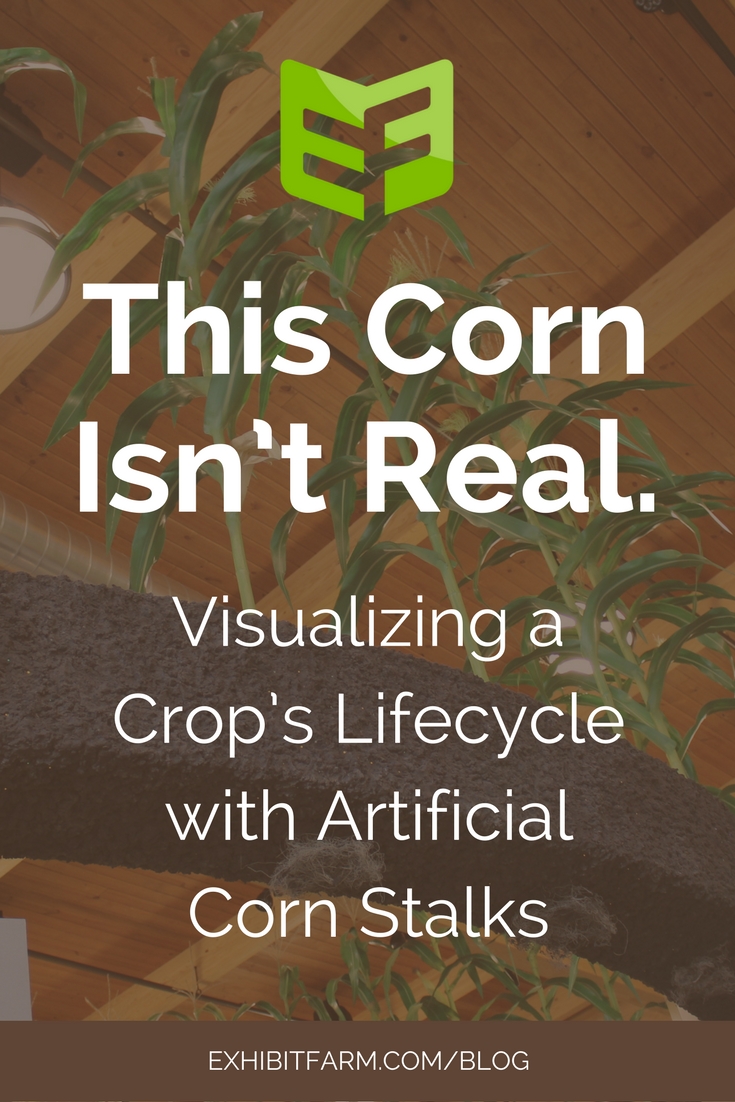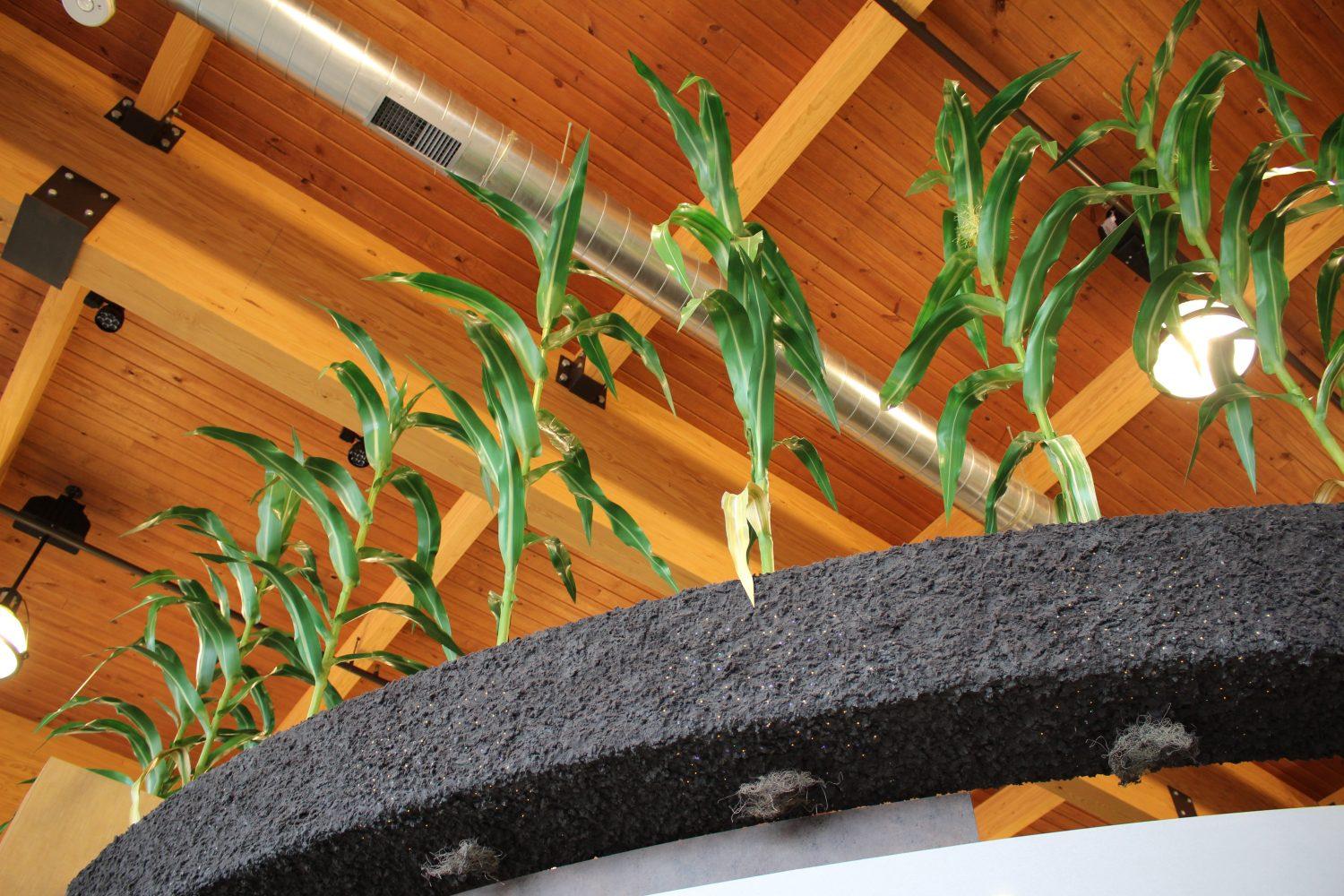A few years ago, the team behind Exhibit Farm figured out how to make some really convincing artificial corn stalks.
Why artificial corn? We’ll tell you why.

(You can view this agricultural exhibit on our custom products page.)
What these Artificial Corn Stalks Do
The corn stalks ended up being featured in an exhibit at AgroLiquid’s IQhub about soil nutrients. It’s a display that shows the different types of nutrients required by corn at different stages of its lifecycle. The stalks of sculpted corn stand in a circular ring of fake soil (or soil soffit) that has fiberoptic lights of different colors. Each color represents a different nutrient. And the number of lights under each fake corn plant at different stages in its lifecycle shows which nutrients the plant needs at that time in its growth in order to remain a healthy corn plant. The detailed corn replicas show the unique characteristics of corn leaves and stalks as they age from a seedling to a mature plant.
We made fake corn to teach how real corn works. And it turns out that real corn works best when the soil has the right nutrients.
Fertilizer and the Un-Farmed
It’s important to teach this sort of basic principle to the un-farmed because most consumers tend to overlook these important agricultural details. They often don’t get the complexity of a seemingly simple thing such as soil. Many don’t recognize the highly scientific function of fertilizers. But farmers know that whatever goes on beneath the dirt affects how the plant appears out in the open air. This is why fertilizers are necessary to producing healthy crops. They provide the nutrients that certain plants need in order to grow — nutrients that the soil itself often lacks.
 The Nice Things about Artificial Corn
The Nice Things about Artificial Corn
But the fake corn has helped to change things. Thanks to this visual and highly detailed exhibit, visitors can get a better understanding of the intimate connection between plants and the soil. And, without trespassing on a farmer’s field, they can get a taste of the complex science involved in fertilizing crops.
And the nice part about fake corn and soil is that (1) it won’t die and (2) it’s not as dirty. So all of us here at Exhibit Farm figure it’s worth our time to make it look as realistic as possible. That way it’ll be worth keeping and using for a long time to continue teaching important agricultural principles and processes.
Check out our Instagram and Pinterest pages to see more pictures of our artificial corn project.
